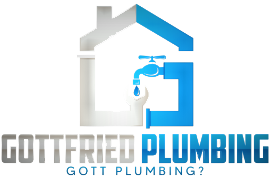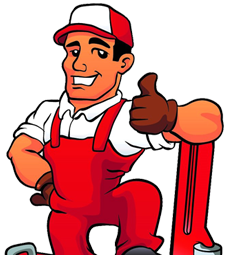Water is a vital component of life and also for the issues related to residential plumbing. Civilizations have flourished where water is abundant, such as along riverbanks. Water is required for a variety of domestic tasks in everyday life. As a result, water service (i.e., water supply and drainage) has become an essential component of each home. A domestic plumbing system is a system that provides water services to a home. It’s a difficult system to install and maintain, and it’s also one of the most expensive. This page provides an overview of the home plumbing system, which will aid in understanding its design, function, operation, and maintenance.
What is residential plumbing?
Residential plumbing encompasses all aspects of residential plumbing, including water, drain, and sewage lines, water heaters, and all other plumbing fixtures.
Plumbing is the process of installing, maintaining, and modifying pipes, fixtures, appliances, and appurtenances in conjunction with sanitary or storm drainage systems, a venting system, and public or private water supply systems. Drilling water wells, installing water softening equipment, or producing or selling plumbing fixtures, appliances, equipment, or hardware are not included in plumbing. A plumbing system is made up of three parts: a sufficient supply of potable water, a safe and appropriate drainage system, and enough fixtures and equipment.
Hot and cold water supply pipes, fixtures and appliances, drain pipes, traps, vent pipes, water storage tanks, and other components make up the home plumbing system. It flows either behind the walls or on the walls, undetected.
The housing inspector`s high problem at the same time as analyzing plumbing is to make sure the availability of a secure water deliver device, an ok drainage device, and sufficient and right furniture and gadget that don’t contaminate water. The inspector ought to make certain that the device actions waste correctly from the house and protects the occupants from backup of waste and perilous gases. This bankruptcy covers the foremost functions of a residential plumbing device and the primary plumbing phrases and concepts the inspector ought to realize and apprehend to become aware of housing code violations that contain plumbing. It can even help in figuring out the greater complex defects that the inspector have to talk to the suitable agencies. This bankruptcy isn’t always a plumbing code, however have to offer a base of know-how enough to assess family systems.
Objectives of Good Plumbing System
- Providing safe drinking water (potable water) in sufficient quantities, at the appropriate pressure and quantity.
- System of drainage (collection and disposal of spent (waste) water)
- Check for leaks to reduce water waste or to achieve zero leakage.
- Manholes for drain pipe cleaning are provided.
- Collecting and disposing of wastewater from the residence in a cost-effective manner.
- Potable water should never be combined with wastewater.
- The drain pipe from the home should have a downward slope, with a minimum of 1/4 inch per foot slope, i.e. 20mm per 1m, and a maximum of 3 inch per foot slope, i.e. 80mm per 1m.
- Quality equipment, materials, and craftsmanship are required in the plumbing industry.
- Keeping noxious gases out of the house and enabling them to depart easily.
Essential components of a residential plumbing system
- System of Water Supply (flow of water into a house)
- Appliances and Fixtures (where water used for carrying out various activities)
- System of drainage (collection and disposal of spent (waste) water)
Issues about plumbing
Finding a Leak
For thousands of years, plumbers have struggled to develop a simple technique to detect leaks.
Finding a leak in a home can be challenging, but a residential plumber can often swiftly rule out specific places. Because it’s a tiny linked system, the leak can only come from a few points.
Clearing a Drain
When a homeowner’s drain becomes clogged, a plumber can snake the drain to clean it out, send in a camera, or dig up the yard to repair a pipe outside. They usually exclusively deal with one-of-a-kind systems.
Communication
Residential plumbers have it easier when it comes to communicating. They’re working directly with the property owner(s) or the major user of the plumbing system (in the case of rental homes).
Daily usage of the plumbing system
Only the family is reliant on the system in a residential setting, necessitating fewer pipe fittings and outlets.
Home plumbing systems
Drain-Waste-Vent System
The drain-waste-vent (DWV) system is one of the most important aspects of a house, even if it isn’t one of the most glamorous. The drain-waste section of the system’s duty is to transport waste water and sewage from sinks, bathtubs, showers, toilets, and water-using equipment like dishwashers and washing machines to a septic tank or public sewer.
The vent system, which is connected to the drain-waste pipe and has the function of ventilating sewage gases so they don’t build up in the house, is a section of the plumbing that most homeowners aren’t familiar with. The vent system also aids in maintaining the correct pressure in drainpipes for effective drainage.
The pipes that make up the DWV system are frequently buried behind walls, beneath floors, and in the attic. However, when the system stops working well, it is barely forgotten. Clogged drains are one of the most typical issues with a DWV system.
Water Supply System
Water is delivered to faucets, showers, toilets, bathtubs, and appliances like the water heater, dishwasher, and washing machine through a home’s water supply system, which runs from the street to your house and branches out to deliver water to faucets, showers, toilets, bathtubs, and appliances like the water heater, dishwasher, and washing machine.
The supply and distribution equipment consists mostly of a system of water pipes, fittings, service valves, and faucets. Plastic, copper, and galvanized iron are typical materials for these pipes and associated fittings. The diameter of the pipes varies from 1/2 inch to 4 inches or more.
Kitchen Plumbing System
If you’re reading this, it’s likely that either 1) you’re having issues with your kitchen’s pipes or drains, or 2) you’re thinking about (or are in the middle of) a kitchen renovation project that includes dealing with pipes in the floor and walls. You’ll find assistance with both of these difficulties here, as we look at kitchen plumbing planning, installation, and maintenance.
The plumbing in most kitchens is rather straightforward, consisting of hot and cold water supply lines to the taps, a waste line for the sink (or sinks), and a gas supply pipe for kitchens with a gas range. Dishwasher, disposer, ice maker, and/or instant hot water hookups are common in kitchens, however they are usually connected to the sink’s plumbing.
Bathroom Plumbing System
Bathroom plumbing includes sinks, showers, bathtubs, and toilets. A bathroom’s plumbing must provide water to and remove waste from all of these fixtures in a well-organized, efficient, and leak-free way.


